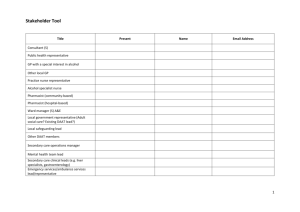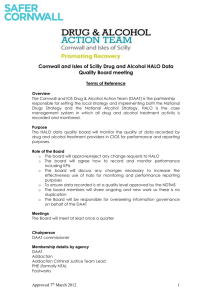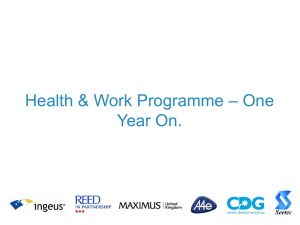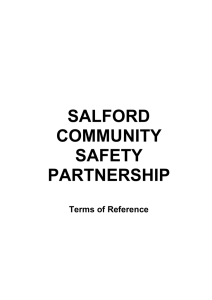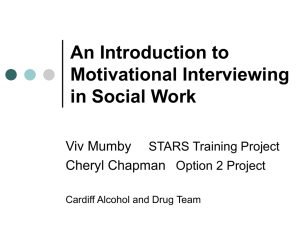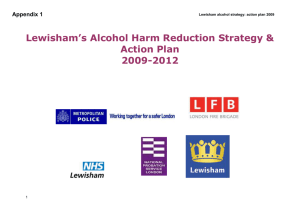Treatment
advertisement
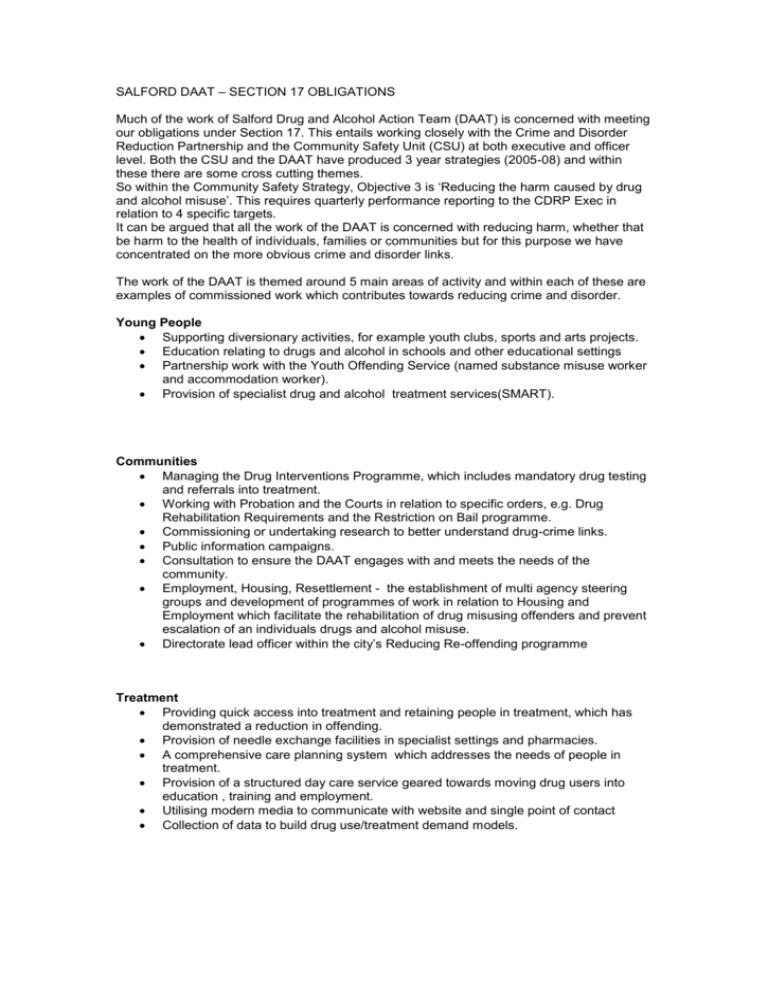
SALFORD DAAT – SECTION 17 OBLIGATIONS Much of the work of Salford Drug and Alcohol Action Team (DAAT) is concerned with meeting our obligations under Section 17. This entails working closely with the Crime and Disorder Reduction Partnership and the Community Safety Unit (CSU) at both executive and officer level. Both the CSU and the DAAT have produced 3 year strategies (2005-08) and within these there are some cross cutting themes. So within the Community Safety Strategy, Objective 3 is ‘Reducing the harm caused by drug and alcohol misuse’. This requires quarterly performance reporting to the CDRP Exec in relation to 4 specific targets. It can be argued that all the work of the DAAT is concerned with reducing harm, whether that be harm to the health of individuals, families or communities but for this purpose we have concentrated on the more obvious crime and disorder links. The work of the DAAT is themed around 5 main areas of activity and within each of these are examples of commissioned work which contributes towards reducing crime and disorder. Young People Supporting diversionary activities, for example youth clubs, sports and arts projects. Education relating to drugs and alcohol in schools and other educational settings Partnership work with the Youth Offending Service (named substance misuse worker and accommodation worker). Provision of specialist drug and alcohol treatment services(SMART). Communities Managing the Drug Interventions Programme, which includes mandatory drug testing and referrals into treatment. Working with Probation and the Courts in relation to specific orders, e.g. Drug Rehabilitation Requirements and the Restriction on Bail programme. Commissioning or undertaking research to better understand drug-crime links. Public information campaigns. Consultation to ensure the DAAT engages with and meets the needs of the community. Employment, Housing, Resettlement - the establishment of multi agency steering groups and development of programmes of work in relation to Housing and Employment which facilitate the rehabilitation of drug misusing offenders and prevent escalation of an individuals drugs and alcohol misuse. Directorate lead officer within the city’s Reducing Re-offending programme Treatment Providing quick access into treatment and retaining people in treatment, which has demonstrated a reduction in offending. Provision of needle exchange facilities in specialist settings and pharmacies. A comprehensive care planning system which addresses the needs of people in treatment. Provision of a structured day care service geared towards moving drug users into education , training and employment. Utilising modern media to communicate with website and single point of contact Collection of data to build drug use/treatment demand models. Alcohol Supporting Alcohol Misuse Enforcement Campaigns and the Tackling Violent Crime Programme. Supporting Under Age Sales campaigns with Trading Standards Safer drinking public information campaigns. Establishment of Criminal Justice Alcohol Treatment Service, which includes arrest referral, Court-based interventions (including the Criminal Justice Initiative and Domestic Violence Court) and work with Probation and Prisons. Tackling Supply Lead role is undertaken by the police and HMC&E. Working with the Police to develop reducing supply strategies Working with Criminal Justice partners to target re offending of Prolific and Priority Offenders Creation of a single point of contact which facilitates the public’s ability to report drug related concerns in local communities
